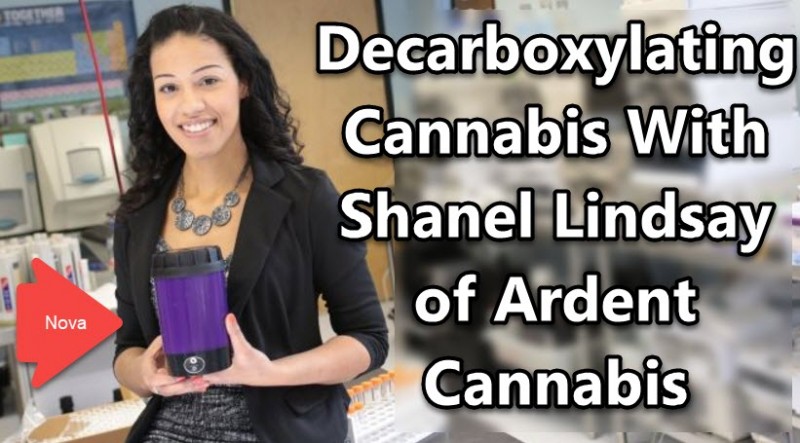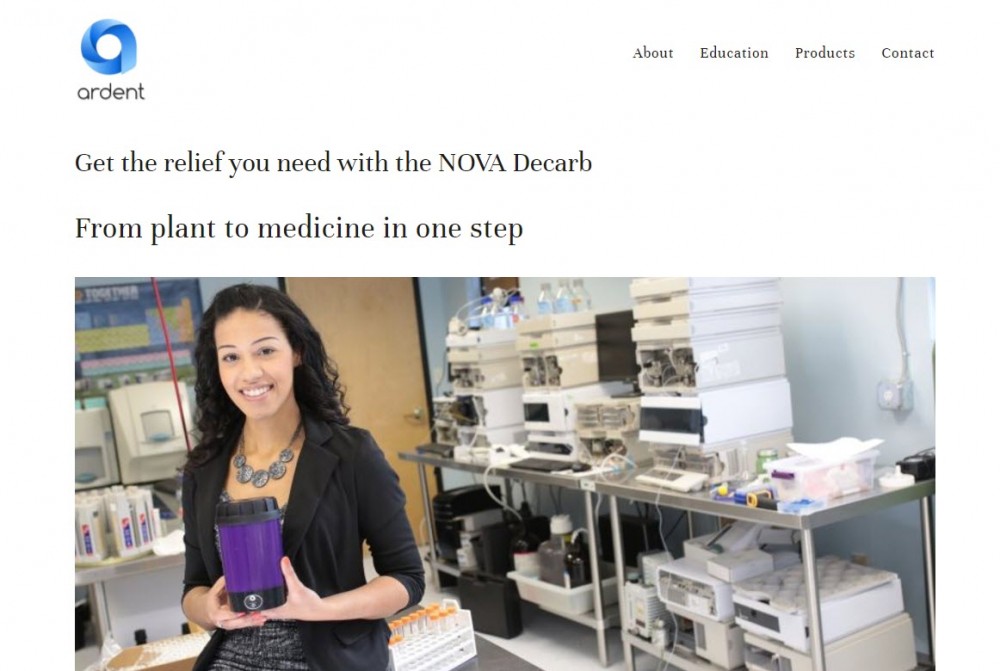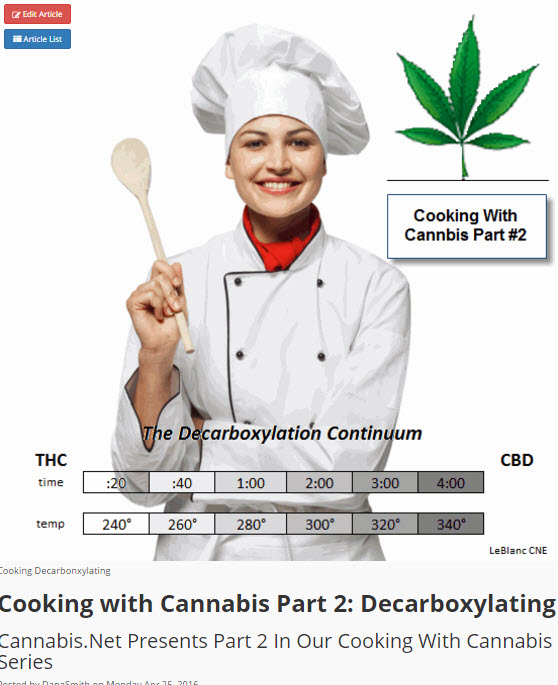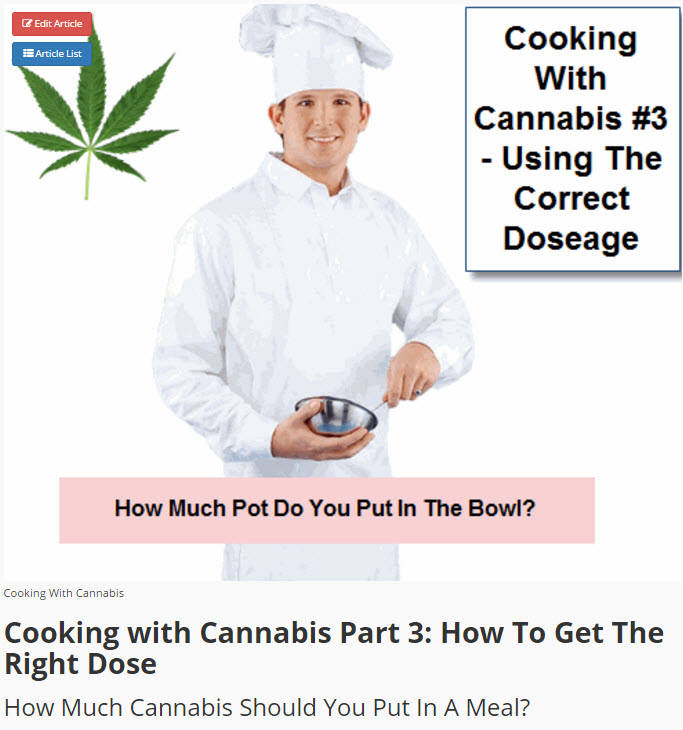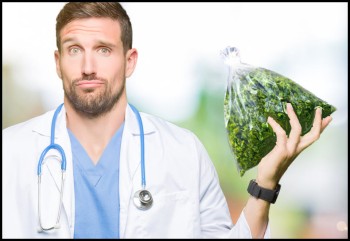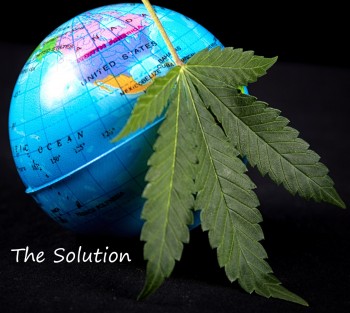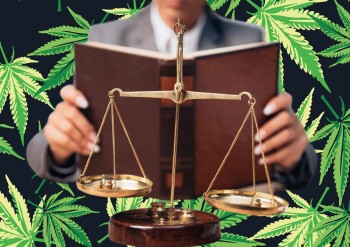Decarboxylating Cannabis With Shanel Lindsay of Ardent Cannabis
How do you Decarb Cannabis? (What is Decarboxylation of Cannabis, Anyway?) from CannabisNet on Vimeo.
Cannabis.net was lucky enough to sit down with the legend, Shanel Lindsay, of Ardent Cannabis, to talk about the NOVA decarboxylator and how to decarb your cannabis correctly. You can watch the full interview above or read it below.

00:03 Curt: Hey everybody. Curt here with Cannabis.net, again, a second live broadcast today but this one is super special. What exactly are we looking at? Anybody wants to know, you could put your comment in here. Does anybody recognize what this product should be? And a better question would be, why are thousands of people worldwide buying this product? Well, to answer your questions, this will be a great tutorial for those just getting in the niche. This is a Decarboxylator called the Nova from Ardent. And I am lucky enough and we're lucky enough to be here and talk to the founder and give a demonstration. Shanel Lindsay, how are you?
00:47 Shanel Lindsay: Hey, everybody.
00:47 Curt: Again, we are in Massachusetts with the founder of Ardent, making a Decarboxylator. But I gotta stop her before she even starts.
[chuckle]
00:56 CURT: What is decarboxylation?
00:57 SHANEL: So decarboxylation, it's the fundamental underlying process of activating cannabis, and it's necessary, no matter how you're using cannabis, you are decarboxylating whether you know it or not. And even though decarboxylation is kind of a long word, maybe a little bit science-y, you can just call it decarb for short. And what it is, it's actually activating the THC and the CBD, all of the different cannabinoids that you are looking for, need to be activated, in order for them to be available to your body. This is why people smoke cannabis. This is why people make pot brownies. The problem with those processes is that you're wasting a lot of THC. And it's really hard to get an accurate dose, and actually impossible before now. And so, I've been a medical cannabis patient for over 16 years, making edibles, topicals to help with my own ovarian cyst, and that was the process and the procedure that led me to say, "Listen, this could be a lot easier. It could be really simple even for people who have never used cannabis before."
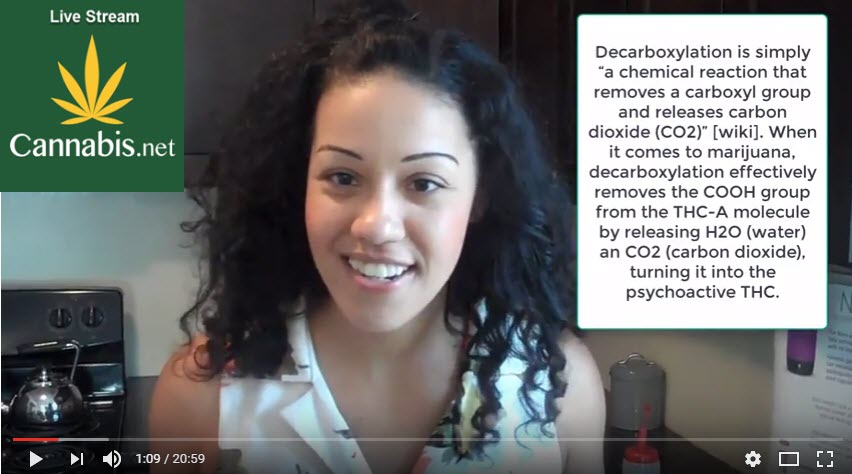
02:00 SHANEL: And so, I went and developed the Decarboxylator. And what it is, is it's a precision heating device. It uses multiple sensors and a thermal heating core, so fully encapsulating heating core, in order to give lab grade decarb of your kief, or your tram, or your concentrate of your flower. And after you decarb, it's really as simple as just pressing a button and we will do a decarb process. We have some really cool things to show you how to make here today, but when it comes out, you literally can make any cannabis product that you want for a fraction of the price that you paid somewhere else. And it doesn't matter if you've been doing this for 20 years, or if this is your first time, you're going to get a better end product. At the end, you're going to see how very simple it is. And so at Ardent, that's the name of our company, ardentcannabis.com, we are all about bringing the science to people, bringing in the tools to people to help eliminate the stigma of cannabis, so that more and more people can use it, whether it's for their health or for wellness purposes. And so, we're gonna decarb a couple of different things today. So first, we're gonna start off with some shatters, some concentrate.
03:09 CURT: See the thumbs up come up now and the hearts. Now we got some action.
03:11 CURT: Yeah. So this is the nice concentrate from Droptop in California, and it smells delicious. And what we're gonna do is... See, a lot of people know about decarbing flower, right? But we're gonna show them how easy it is...
03:27 CURT: Lots of thumbs up coming in now. [chuckle]
03:28 SHANEL: To decarb a concentrate. And one thing I would suggest the people do, if you're new to decarb and you have questions, there are a lot of myths about decarb online, and just generally, and that was one of the things that led me to actually developing this product is because, this is a really important process when it comes to cannabis and we should have some science and data behind it. Yes, you do have to decarb concentrates if you are wanting to use them in topicals, or edibles, or suppositories, or other products. And you do need to decarb flowers, well, even if it has been cured. And we actually came up with this great decarb guide. We'll be talking about the data in it a little bit once we throw this in. Let me get this in here.
04:07 CURT: What are we doing?
04:09 SHANEL: So we're sticking this in this concentrate in here, and in fact, honestly, it's gotten a little sticky, so if you just give me one second, I'm gonna throw in the freezer for just for a sec. We can talk about the flower in the meantime. So, just how you use the device is you take your flower, you're keeping it in concentrate and put it in here, and you're gonna see that when we do the concentrate we're gonna do a little something special to keep it from sticking at the bottom. And then, you take the silicon cover and place it on top and this is gonna slide into the device. And like I mentioned before, we have a fully encapsulating heating core, so the heater is all around, surrounding it, which is different than if you are using an oven or a toaster oven. And it actually uses two precision sensors. We actually have a sensor that's embedded in the heating element on the side the you can't see, and then there's a sensor in here which is the internal sensor. So when you press the button, what it does, it activates the firmware, the algorithm, the decarb algorithm, and it's really sensing, those sensors are sensing in real time, up to the precision of a tenth of a degree, bringing it up to the right temperature and then starting to control for that internal temperature. So, it really creates these perfect heating cycles to fully activate the THC without destroying any of it.
05:26 CURT: All right. Let me stop you and ask you a question. We get this a lot. What happens if I just take a bite and eat it, do I get high?

05:32 SHANEL: No, that's the whole point of this is that... In fact, I'll give a little...
05:37 CURT: So if a child would grab a bite and eat it, they're basically eating kale?
05:41 SHANEL: Exactly. It takes the decarboxylation, which right here, if you can see, this is what the THCA molecule looks like. So that's what's actually in the plant, and you can see this part right here, this is the carboxyl group that keeps it from binding with your CB1 and CB2 receptors if you were to just eat it raw. It actually needs to go through this process over here, which is what we do in decarboxylation, which is removing this carboxyl group. The problem is, is that this is a scientific process. It's not something you can just look at and see if it has been done right. And for me, after 10-plus years of making edibles and topicals, going to the laboratories, I started this process by three years ago by going to MCR Laboratories and testing my medicine. And I was so stunned to find out that I was wasting over 30% of the available THC. And that was after me, being an expert for over 10 years making these products.
06:36 CURT: Alright. So you're saying going in the oven, using a cheese cloth, the traditional way is way wasting roughly, easily 30%, if not more of your THC.
06:43 SHANEL: Absolutely.
06:44 CURT: Got it.
06:45 SHANEL: And if people are interested, we do have our decarb guide online, where they can go and take a look at the testing that we've done on the oven, where you see it's very easy to get lost. It's also very easy not to fully decarb everything. You need two things when you're decarbing. You wanna fully convert from the acid form, but then you wanna make sure that you're not burning off. And that's what we saw in the lab when we're doing the development for the device is that, some people were coming in and they were literally burning 80%, 90%, 100% of the THC. Often we're left with nothing. This process is really important for anything that you wanna do.
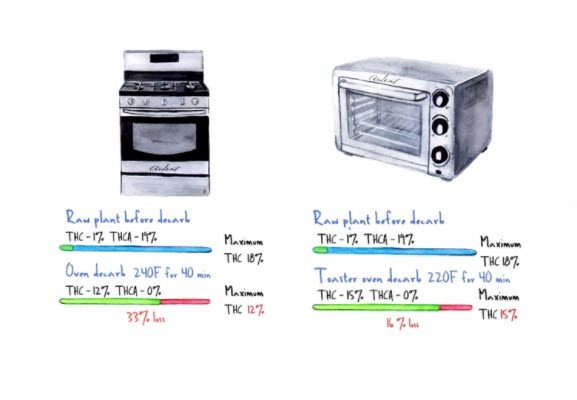
07:18 CURT: Too much heat for too long means THC gets burned off.
07:21 SHANEL: Correct.
07:22 CURT: Got it.
07:22 SHANEL: And even in the sense of a crock pot, which is what my preference was, because a crock pot is much more even heating than an oven. But what we saw is that the crock pot actually never gets hot enough to fully decarb. Crock pot water boils at 212 degrees and actually even lower in higher altitudes. And you see that you can't get full conversion and then you still burn some off. It's really a very fickle process, and we, after all the testing that we were able to do, we're able to design something that would get the perfect decarb everytime. I think that... This is probably ready now. I mentioned, if we were using flower, we just put it right inside. But you can always take a little glass container or a silicon container, especially if you're using a wax or a shatter, and put it in there, just so, when it comes out, it will be really easy to clean up.
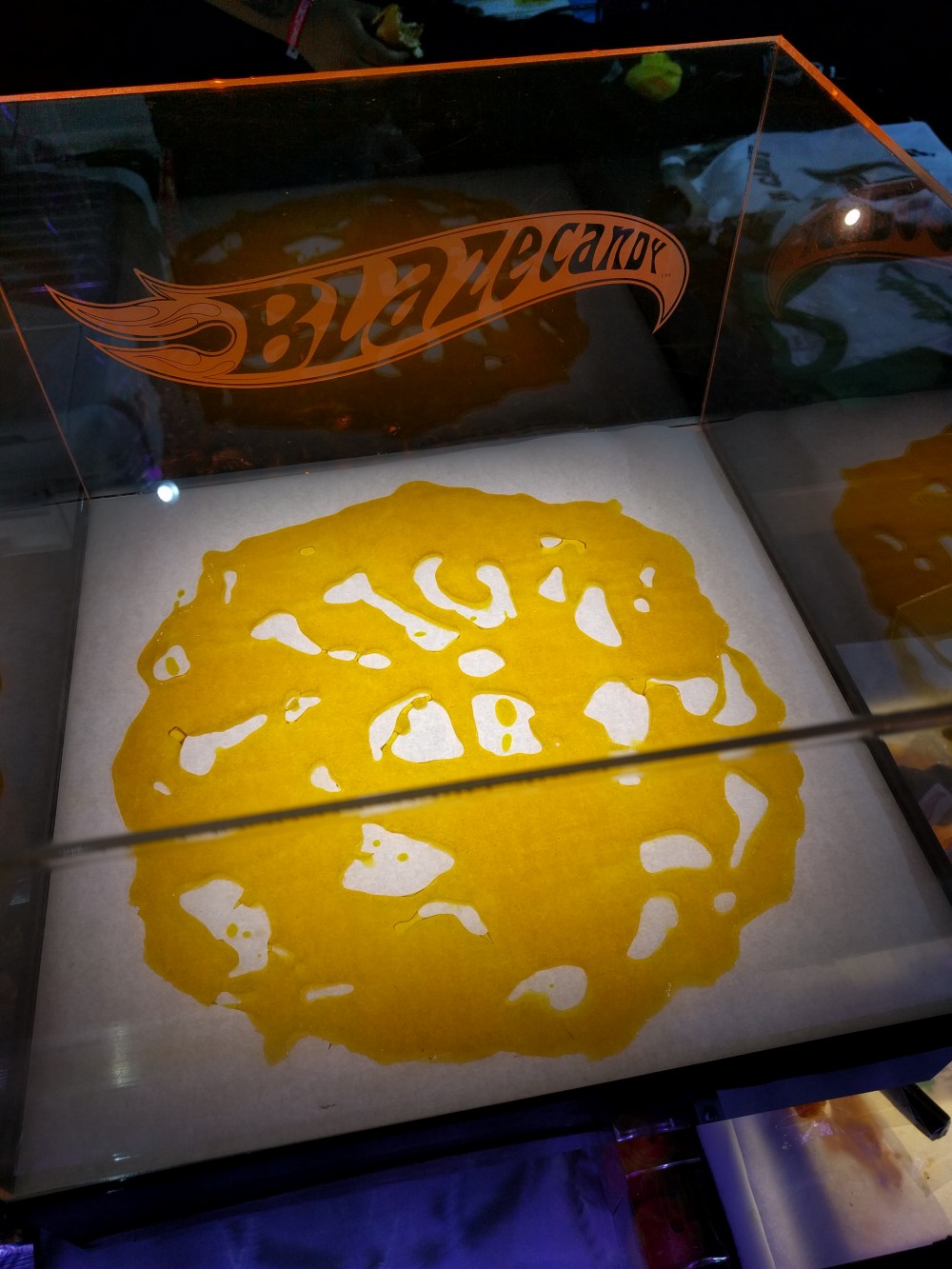
08:17 SHANEL: And one thing I love about using wax, and shatter, and rosin particularly, is how easy it is to blend and make anything after it comes out because it's literally like a little sauce. You could put it in spaghetti sauce or make a pizza out of it. You could do anything that you wanted to do. Put some in here, and let's think about, if we're putting half a gram of shatter in there, or let's say, just for argument's sake, we're putting a gram in there, and it's 60% potentiate Ca, when it comes out, you're gonna have close to 600 milligrams of THC in this. Think about how much, how many different cannabis products you could make with just a little bit.
09:00 CURT: Hi, Lucci. I see you on there. Shanel's company sells it, Ardent. You can buy these online. Cannabis.net is not selling them or getting any kind of a profit. We're just doing a really great prees, talking about how the decarboxylation works. And a lot of people have fears out there about kids eating raw marijuana or rock cannabis and people getting high, but it's actually not true. We like to go over the scientific process of what has to happen to the actual plant in order to activate that THC.
09:30 SHANEL: We've put it inside, now we're gonna slide it in and press the button. That's gonna start the heating cycle.
09:36 CURT: That set it. It goes in, push the button. Roughly how long?
09:39 SHANEL: The entire decarb process, that's the heat up, the decarb, and the cool down time, again those sensors are sensing in real time what's happening. It's going to vary between about an hour and 40 minutes and two hours for that entire process. I have some juicy fruit that we decarbed earlier, some flower.
09:56 CURT: Okay. We're pulling a little cooking show trick here.
09:58 SHANEL: Yes. [chuckle]
10:00 CURT: I had Shanel do a little decarboxylating, so we don't take an hour online here but we can see what it looks like.
10:05 SHANEL: Yep. We have some juicy fruit that just came out a little while ago. And now, people... Here it is. I'll put it on here.
10:11 CURT: There you go.
10:12 SHANEL: We can see, the bun will get a little bit darker in color. This right here was a super, super light cannabis strain, it's still pretty green and light. If you're starting with a medium green shade to darker green, it's gonna look brown when it comes out but it won't be burnt or anything like that. And now, you literally could just eat this bud.
10:32 CURT: And what would happen if you ate a decarboxylated bud? You would get high?
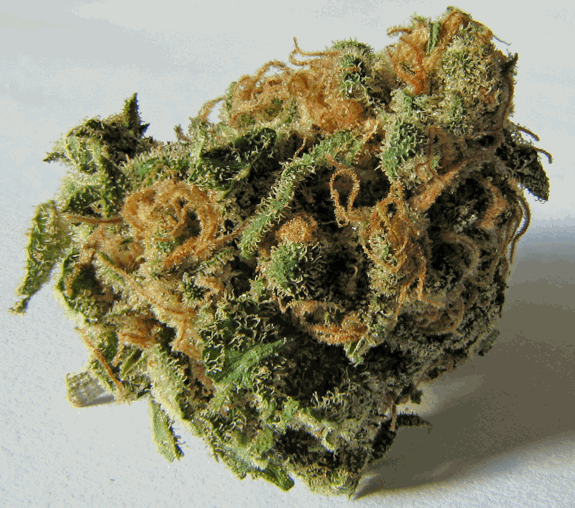
10:35 SHANEL: Well, it's an edible at that point.
10:36 CURT: Okay, it's an edible.
10:37 SHANEL: It is an edible because really, this active THC is just sitting on the plant material. And so, when you think about how much THC is actually in here, because you're getting full activation and you're not getting any loss, you really are getting an incredible amount of THC, depending on the strain. An average person, probably, is getting around 20%, 23% active THC, right? If you're getting some good quality flower. Man, I was just out in California and I think I saw at the Cup, and there was a company, I can't remember what it was, but they had some flower testing out at 32% from SC Labs. I think that was the highest that I had seen and they were billing themselves as the highest in California, but let's just say 20%. Again, that's 200 milligrams in every gram. If you wanted to get a 20 milligram edible, you literally would only have to break off 0.1.
11:28 CURT: Of that.
11:29 SHANEL: Yeah. Think about how much that is 0.1 for 20 milligrams. The idea that you could feed an entire dinner party with one gram. And so, after this, you could do a lot of different things. You could take this, immediately eat it, we have a lot of people that do that.
11:42 CURT: Just like the medical...
11:42 SHANEL: Yeah, just eat it. A lot of women I noticed who are new to cannabis, who are using it for health or wellness, they like to take a little bit and then mix it just with some apple sauce or some Babybel cheese and they just eat it down in one little thing. You have lots of people that love to make a butter or an oil, so you can go and do a really quick extraction and do a butter or an oil. You could also take ethanol and do a quick wash with it, so to make a wax or a shatter. I mean, to make an oil.
12:16 CURT: Yep. So Lucci's asking, "What if you only want CBD? Could you just eat the raw bud as is?
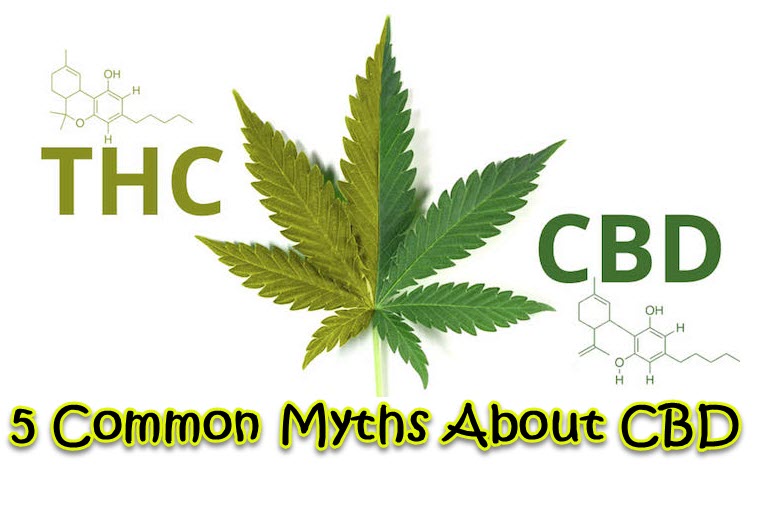
12:21 SHANEL: No. CBD also has to be decarboxylated.
12:23 CURT: Oh, good question.
12:25 SHANEL: Yes. Excellent question. So CBD needs to be decarboxylated. CBD actually requires a different time for decarb than THC. It likes to have a longer decarb but it can actually be very volatile, CBD. So, we did testing in the lab on this, is if you crank CBD up to a high temperature, you really get a lot of loss. And so, customers that use our device, it also depends on the ratio of THC to CBD. So, if you have something that's a two-to-one more ratio of THC to CBD, so two-to-one THC to CBD, one pass in the decarboxylator will decarb the CBD and the THC. If it's a CBD dominate, you need to run it through twice.
13:10 CURT: Okay, makes sense.
13:11 SHANEL: And again, CBD is definitely the next frontier of honing in and perfecting. And again, it does a great job with what most people have which is the one-to-one ratio. And in fact, we're working with several hemp producers right now because again, they are decarbing for CBD purposes to get that as well. So in addition to... So I'll leave this out here, which is our little guy that we've decarbed.
13:32 CURT: Walk us through. Yeah, decarbed.
13:33 SHANEL: And so, while you can just go and eat it or you can make an oil infusion, we knew that there are a lot of people that were gonna want just a one stop to go from the plant to medicine. And so, we developed these capsules. So these capsules right here, we have 15 different formulations for these capsules but they're already filled on one side with all the incipients that will help to absorb in the bloodstream. So this one right here is actually a MCT, coconut oil.
14:01 CURT: Oh wow, cannabis coconut oil.

14:02 SHANEL: Yep. And melatonin. So you would pair this with an Indica and you would have a really great sleep aid. And this right here, could replace Ambien or a lot of other OTCs and this one right here is a B12 and caffeine, this would be great to pair with a juicy fruit for a kind of a uplifting, creative type of experience there but it's really as simple as opening the capsule, taking the decarb plant. And again, you can actually weigh this out to know what the dose was. If we started with some material that we knew was tested previously, either by the grower or the dispensary because you're doing full, active decarb, you can know that. So, here right here, within three seconds, I put together a pharmaceutical alternative...
14:53 CURT: Yep. Wow. Awesome.
14:53 SHANEL: That would just be simple and no need to do lots of different things in the kitchen. We also, once it's active and I love decarbing kief as well, we have a lot of professional edibles makers that use our device. The biggest question we get is, "When are you making a bigger version?" Because this problem with decarboxylation, it's not just a problem on the home side, it's a problem on the commercial side, as well. So, if you were to activate kief, again, you could do really fun things by taking this or taking Keurig cup and putting the tea in there with the kief and just popping it in and making an infused tea. Again, using a coconut oil will definitely help. It will help with that absorption, as well.
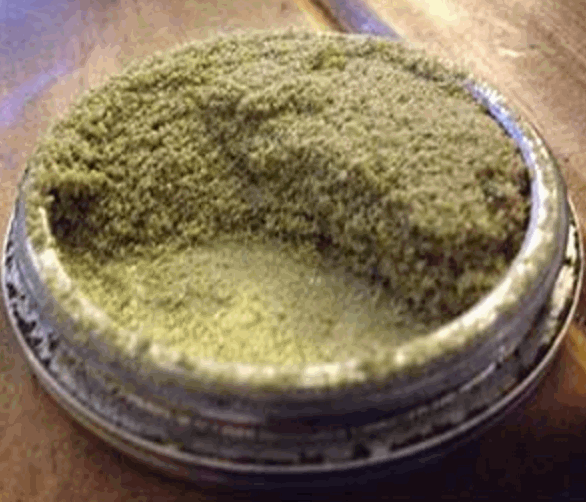
15:35 SHANEL: We make some really cool topicals. So this one right here is a topical that we made with activated rosin, and shea butter and coconut oil, so people love this, making this to treat the pain from fibromyalgia. This is a toner that we use, a facial toner, as well and we actually took some rosin and made a toner here. So again, it's just as simple as taking that rosin, and I'll show it to you in a minute just to show you the consistency that the rosin gets to but it's literally as simple as taking the rosin, we mixed it in here and then you can just go and make all of these different canvas products. It costs us less than 75 cents each to make these lotions. And so, again, the idea that you can really use much less in whatever you're making but then also start to make a lot more different things. That's the exciting thing about the tools and the information that we're bringing to people.
16:37 CURT: Do you have plans to have your products in dispensaries?
16:41 SHANEL: Absolutely. So, we actually are in a couple of stores up in Canada. So Canada's very interesting because they have a great medical and federally legal medical program but there are no edibles allowed in that program. They just have very expensive low dose oil. So obviously, that's a great market for us. And then, we actually are in Thrive in Illinois. There are two Thrive locations that carry our product. But mostly, we found just direct to consumer. People are really excited about just learning and seeing the science, as we continue to research and innovate. And they're really excited about us launching these capsules and wraps which will be ready in just a few months.
17:23 CURT: What's the website they can go to?
17:26 SHANEL: So it's Ardent, A-R-D-E-N-T, cannabis.com and you can find out all about decarboxylation and all about all of the fun things we do here at Ardent. (Click here for Ardent Cannabis)
17:37 CURT: Wow. Fantastic. And how are we doing on our consistency test?
17:41 SHANEL: Oh, we're doing well.
17:42 CURT: It's only been about what?
17:42 SHANEL: So let's see. Now I'm totally breaking protocol because we are not supposed to open this during the process but I'd love for you guys to just take a look and see what... See it's starting to melt a little bit in there.
17:54 CURT: Oh yeah, I can see.
17:54 SHANEL: But once we get deeper into that process, that will just really become an actual liquid. And when we turn it off, if we take it out right away and mix it, it would be very, very simple to do whatever you like with it.
18:11 CURT: So professionals are using your product for edibles. What do you find your at home consumers, is it the topicals?
18:18 SHANEL: Yes. So my favorite edible right now is Leisure Life from out in California. They use our device to decarb their kief to make medicated popcorn. So it's caramel and cheddar popcorn. And then, we also have a couple of dispensaries that use our device to make capsules, make hashcaps, or budcaps. And people at home and they... It all depends on the person, right? It really is about what you like and how you like to use cannabis. So, we have people making cannibutter for 30 plus years that are just really excited about the fact that this does not smell, that you can decarb in the corner and you don't have to keep watching the oven. And it just really simplifies that process. We have a lot of people who are on RVs or in places where they can't have an oven. And so, the just ability... I throw this thing in my purse sometimes and so.
19:08 CURT: At the mall.
19:08 SHANEL: It really travels well, it's only a 90 watts. So when it comes to being efficient and green. In so many different ways, we're green but that's one of the ways, as well. [chuckle] But then, like I mentioned the new people, we have a lot of new people who are just trying use this for medicine. And they need something that is very familiar to them, like the other medicines that they've used, and something that will allow them to know and have the accuracy they're looking for. So part of it is about kind of like creating these products that will help more and more people, like my grandmother or my aunt, start to be able to use this. And then, of course, there's the culinary world. We have a lot of chefs that use the decarboxylator because it helps make the treats stronger and taste a lot better.
19:58 CURT: And they should look for Nova on your website. They should look for the Nova.
20:00 SHANEL: Yeah. So they can look on the website for the Nova Decarboxylator, and also people can go and check out the Lift Decarboxylator, as well. And they know that regardless, they are getting the best and most updated device.
20:18 CURT: That is unbelievable, fantastic, and lots of great comments.
20:24 SHANEL: Awesome.
20:24 CURT: And I think they'll be some people there.
20:25 SHANEL: Can't wait to check 'em out.
20:26 CURT: Yes, we will put the website up when we publish this video. We'll tag Ardent, so you can check out the Decarboxylator in the options. And if you have any questions, of course, Lindsay is available, I'm sure by email. You can ask her about any of it. This is like a science lesson for 20 minutes as some people put.
[chuckle]
20:42 CURT: So, thank you very much Ardent, we appreciate it. I hope you enjoyed it from Cannabis.net.
20:45 SHANEL: Thanks guys.
20:47 CURT: And look for the full article to be up next week. Take it easy, guys.
20:51 SHANEL: Bye.
OTHER STORIES YOU MAY ENJOY...
COOKING WITH CANNABIS, DECARBOXYLATING CANNABIS, CLICK HERE.

